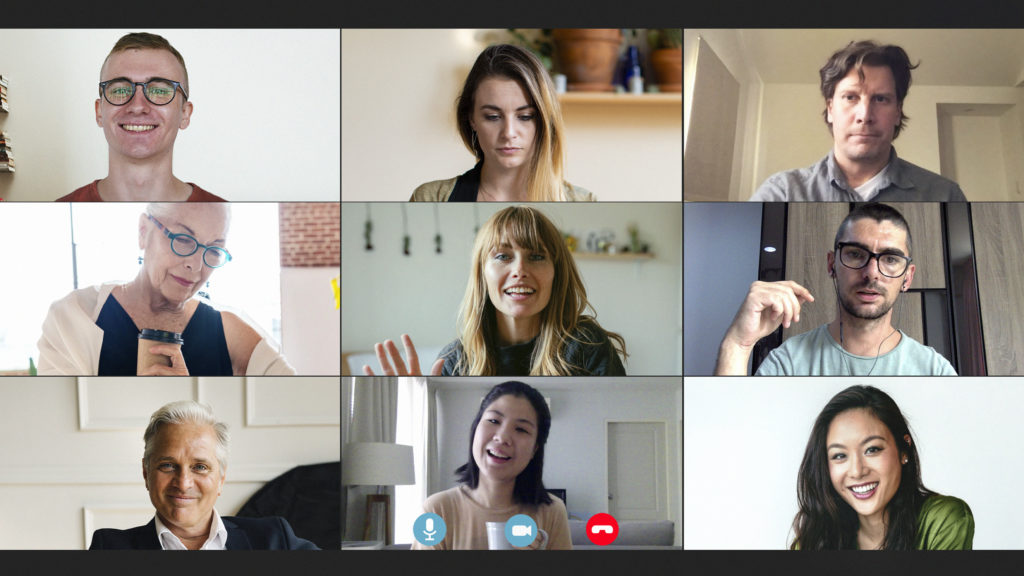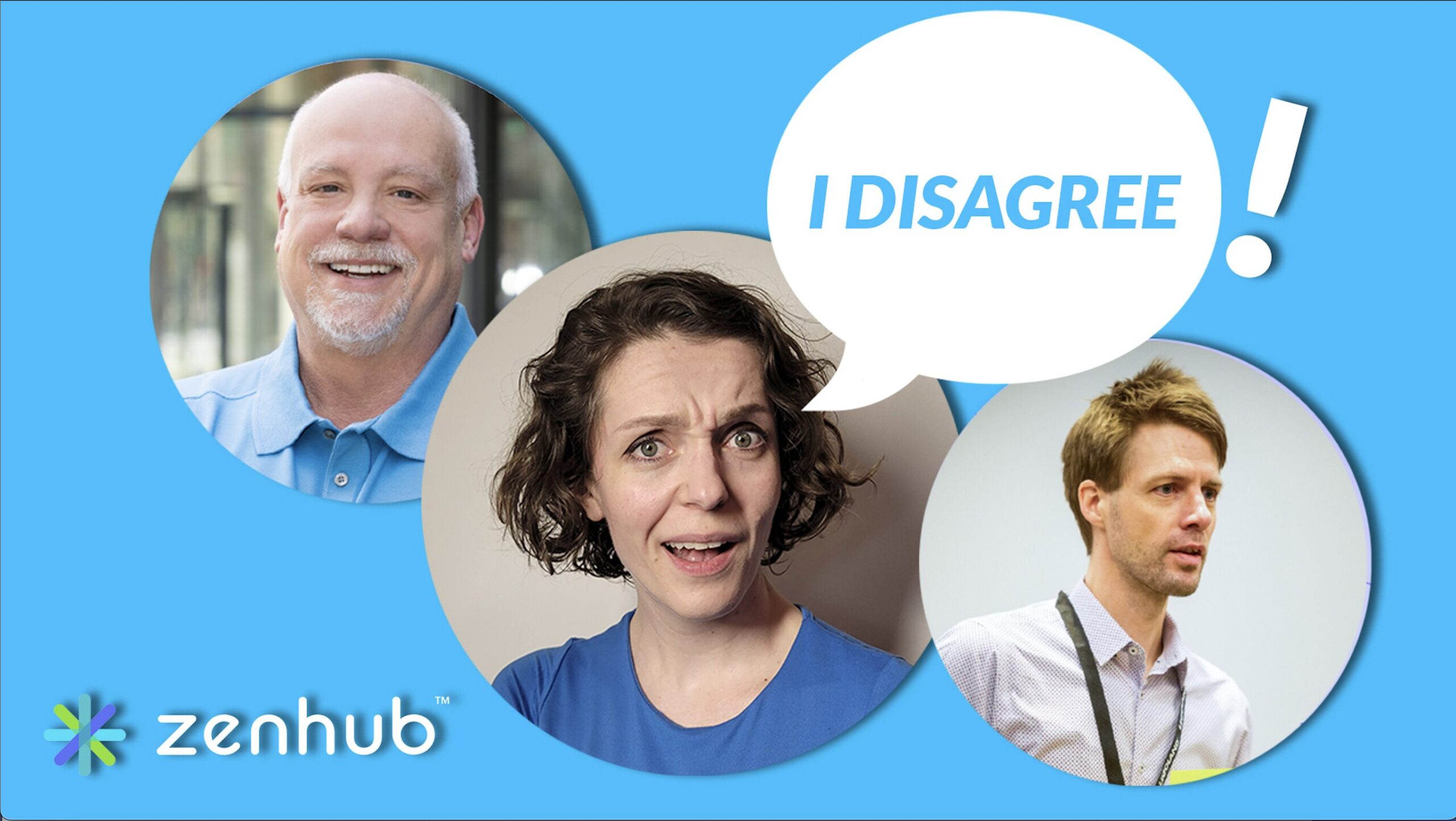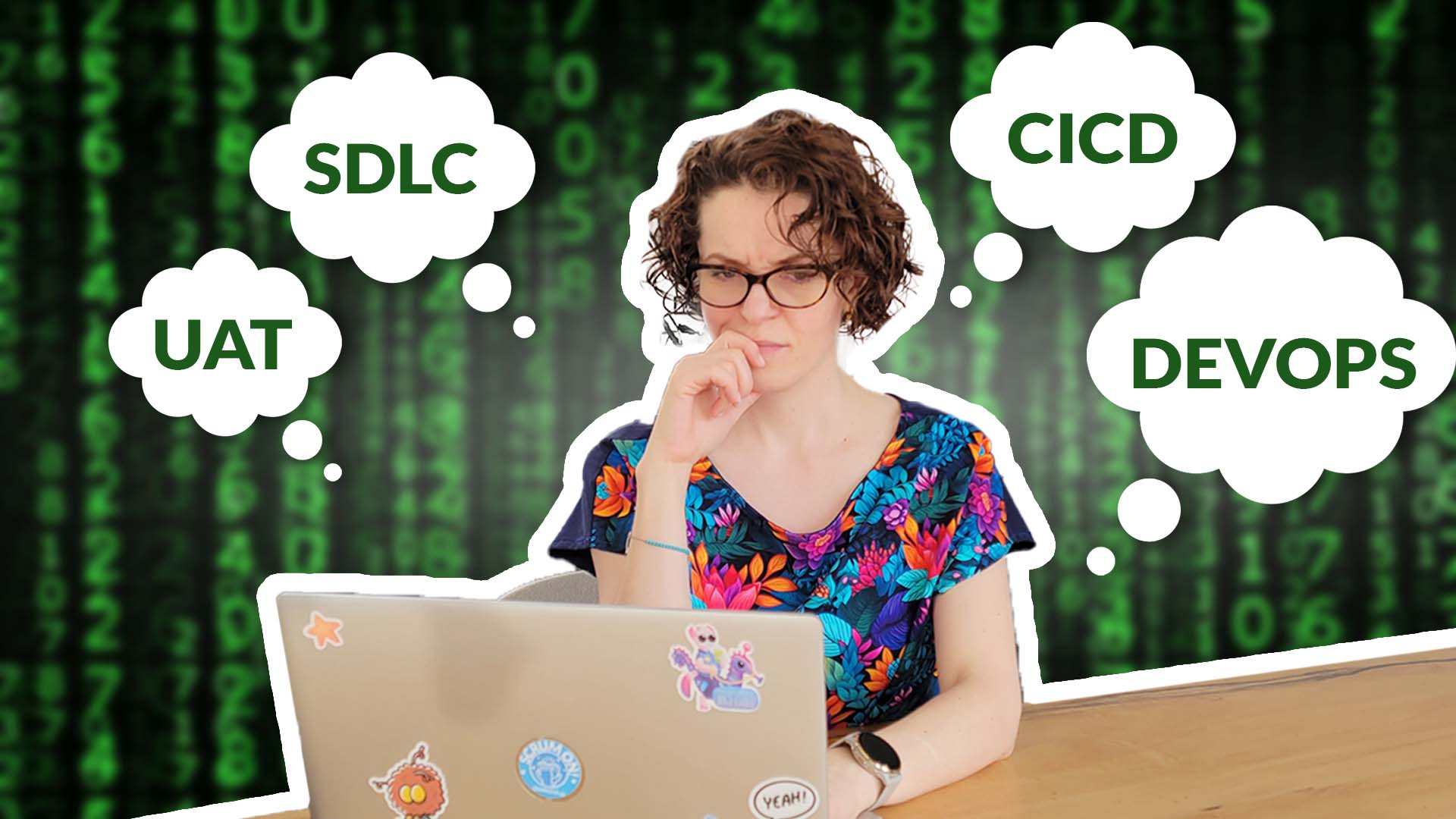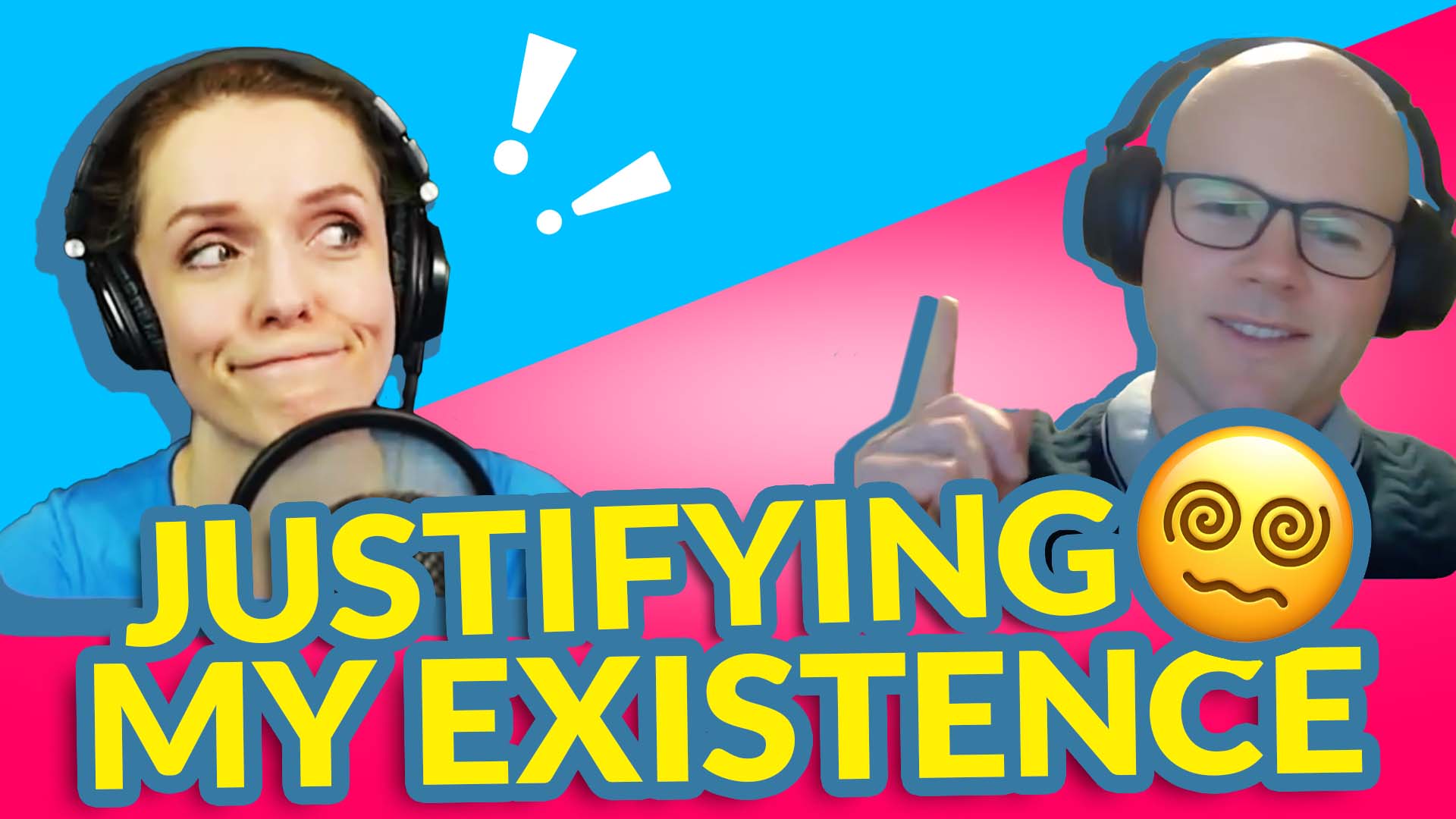Facilitating discussion in big groups can easily become unpractical.
But I have 4 structures for online meetings that will boost your meetings productivity.
How do you know a meeting has become a waste of time?
- Only a couple of people are talking most of the time while the rest are silent.
- The discussion keeps turning around the same points.
- The general energy in the room (or on the call) is going down.
If you see any of these signs, know that you are losing a lot of valuable opinions and ideas.
- Split the group into multiple teams or into pairs.There are a few things you can do as quick solutions like:
- Introduce an exercise instead of just having an open discussion.
- Change the questions you ask.
Watch the whole video if you’d like to learn more concrete solutions to leading productive discussions with big groups.
Hey, it’s Daria here. Welcome!
Productive meetings with big groups are not as unattainable as it seem!
Well, what is a big group of people for a meeting?
I believe that if it’s not a presentation, as in, if you want all of the participants to contribute, then more than 8 people is a big group.
Yeah, I know it may not seem like a lot of people, but when it comes to an engaging discussion – it IS a lot.
Remote meetings can be more challenging when it’s mor than a few people.
That’s why generally you would want to have some kind of structure prepared to run the discussion.
Whether it’s a Sprint Retrospective in a Scrum Team, or a Product Definition workshop with executives.
Bigger meetings require bigger preparation. And it doesn’t have to be a big complex topic you are discussing.
How to facilitate group discussion
My favorite approaches to facilitating discussions with big groups come from the Liberating Structures.
If you’ve never heard of it, here is what the creators of these concepts say about them:
“Liberating Structures are easy-to-learn microstructures that enhance relational coordination and trust. They quickly foster lively participation in groups of any size, making it possible to truly include and unleash everyone. Liberating Structures are a disruptive innovation that can replace more controlling or constraining approaches.”
Or in simple terms by me:
“Liberating structures are a set of exercises that you can use to facilitate discussions with small and big groups where every participant can easily share their opinions without feeling pushed, unnoticed, or judged”.
Keep watching as I’ll share four exercises that will help you encourage collaboration in any meeting.
I’ll also be sharing how you can get your hands on easy-to-use instructions for these exercises, so don’t miss that!
Online meeting Strategies
Of course, having appropriate tools at your disposal will also make it easier to engage everyone in the discussion.
For remote meetings, tools like Miro or Mural are great. I have some videos explaining how to use them and what perks each has.
For in person meetings, you will need some visual aid and a way for people to participate other than speaking. So it’s best if you have a whiteboard space or a flipchart, as well as some sticky notes and sharpies.

Remote meeting rules for big groups
Here are a few rules to ALWAYS take into account when you are facilitating a discussion with big groups:
- Open discussions just don’t work for bigger groups of people as it only allows the most extraverted and outspoken people to share.
- The best conversations happen in small groups of maximum 5 people. Usually 3 people give the most optimal results.
- When you ask a question it’s important to allow everyone some time for individual reflection in silence before you start any discussions.
- It’s useful to have a few ways to ask the same question to help people come up with ideas. For example: What important events happened this sprint that you’d like to discuss? What is the first thing that comes to mind when you think ofthe past sprint? What made you feel happy / mad / sad?
Liberating Structures
Let’s go back to the liberating structures. To avoid repeating similar exercises, I have chosen five drastically different ones for you. I also made sure they don’t seem touchy-feely as I know many people have an allergy to that.
Anyway, the five I chose are called:
- 1-2-4-All;
- Shift & Share;
- 25/10 Crowd Sourcing; and
- Mad Tea.
Apart from one of them, each exercise can easily be used in both in-person and remote settings without the need for modification.
1-2-4-All
This one is the simplest exercise you can do pretty much any time you need to collect ideas from the whole group.
You start by asking your key question or prompt. Like, what defines a great team?
- And then you give everyone a couple of minutes to think about this prompt individually and in silence and write down their ideas.
- Then, you ask everyone to form pairs and spend 2 minutes sharing their ideas and adding more together.
- Then, you ask pairs to join another pair to form a group of four and continue expanding the list.
- Once the final timer is finished, ask the whole group of participants to share their most essential ideas.
The liberating structures website suggests to use the timeboxes like that: 1 minute for individual reflection, 2 minutes for pairs, and 4 minutes for the groups of four.
But I believe it may make sense to add a minute here and there.
For example, give people 2 minutes at the beginning, not just 1, or 3 minutes for pairs not just 2, because otherwise people will feel rushed.
If you don’t have the right amount of participants to perfectly split them into pairs and groups of four, it’s fine to have groups of 3 for round 2, or groups of 5 for round 3.
If you have way too many people for the last step with the whole group, like you have 8 groups of four in the end, you may want to just collect the ideas and categorize them, then highlight the ones you find the most prominent yourself.
Why does this exercise work?
Because every participant has enough time to think of their ideas on their own before having to share them.
In addition, discussions in pairs will be much more productive than discussions with a big group since there are only two people and it’s easier fro each person to have enough time to speak.

Your First Retrospective: Facilitation Guide
Learn how to facilitate your first retrospective with this step-by-step guide that also teaches you the essentials of retrospectives and gives you actionable tips on how to address common challenges.
Shift & Share
Over the years I have adapted this exercise to make it simpler and also ready for remote discussions.
So here I’m sharing my version that is based on the liberating structure, but not exactly is the same exercise.
In this one you split the group into small teams of 5 people or less and give them a problem to solve. Each team gets a different topic.
This exercise works best when the participants are not just answering one question and when you have multiple things to cover in a shorter amount of time.
For example, in a retrospective you may use this to allow the group to work on resolving several issues like one team will be working on finding solutions for the high amount of tech debt, another one on ineffective Sprint Reviews, and the third one on reducing the carry over.
You give the teams enough time to work on the problem and prepare a small presentation. Like 8 to 10 minutes will be great.
It’s important to ask them to clearly document what they discuss and what decisions they made on a flipchart or a whiteboard.
After that, you ask each team to briefly explain their train of thought and walk the rest of the group over their poster.
Then, you ask the groups to rotate and take over the poster and the problem from another group, and you give them 5 minutes to add their ideas and thoughts to it.
They are free to make changes, remove or add something.
Then you do the rotation again for another five minutes.
That way each team has a chance to work on multiple problems at as time, while also not working on them from scratch because they will be working of off the ideas created bythe previous team.
In the end, give the whole group some more time to review every poster and presentation, including the one they initially worked on, because it was changed by other teams.
And ask them to highlight the most important insights they got from it.
This can be then shared as key takeaways on sticky notes or in a discussion.
Why does this exercise work?
The teams working on each problem are small enough to allow every participant to contribute contrary to a traditional open conversation approach.
It also allows every participant to work on multiple topics during the meeting, but by limiting the time they spend on it, it helps keep everyone focused and on track.
Just a heads up on how to get your hands on instructions for the five exercises I share in this video.
I will be sending my regular newsletter on Monday with all the details in an easy to follow format that you will also be able to print for reference.
If you are not yet signed up to my newsletter, do it now before I send out that email.
And if you are watching it after the fact, don’t worry – you will have the link to read past issues of the newsletter on any future emails I send you.
25/10 Crowd Sourcing
This one is especially good in person, and may not be as effective in a remote setting. But I’ll give you an adaptation you can use.
This exercise is quite simple. Give every person one index card and ask them to write a single answer to a question.
The question should be asking the most important or key item when it comes to a topic.
For example, what is the most useful metric for Scrum Teams to track?
Once every person has written their answer, you ask them to walk around the room and exchange the cards with every person they cross paths with without reading the card they’ve got.
They should keep exchanging the cards until you say stop.
At this point, they should read what’s written on the card and give it points from 1 to 5. The more they agree with what’s written, the higher the number of points they give.
And then you do a couple of more exchanging rounds. Say, you do 3 rounds in total.
It means that there should be 3 numbers on each card giving it from 1 to 5 points each.
Now it’s time to define which card is the winner.
Every person sums up the votes on the card they have currently in their hands.
The maximum possible sum can be 15 (5 max point multiplied by 3 rounds) and the minimum would be 3 (1 point per round).
You start with the highest rank and ask: who has 15 points?
If someone has a card that got 15 points in total, they can now read the card out loud.
This is now the winner.
You can then ask a couple of more times: who has 14 points? who has 13? who has 12?
You don’t have to go all the way to the bottom as you want to only focus on the most valuable ideas, about 3 or 5 maximum.
In a remote setting this exercise doesn’t work exactly the same and I usually run it very differently.
I ask a similar question but ask the participants to write down as many answers as they can in one minute.
To continue with our metrics example, the question I may ask: What metrics can be important for a Scrum Team to track?
Once you’ve collected the answers, you need to do a quick review and remove any duplicates.
When you have your final list, you conduct a quick dot voting session. This allows you to highlight the most important answers that have been voted for by the group.
Why this exercise works?
Every participant contributes to the pool of ideas which gives everyone a voice. And then every participants has a say in what they believe is the most valuable through their votes.
Mad Tea
That is a liberating structure that you won’t find on their website as it’s not an official one. And I’m wondering if it wasn’t created by The Liberators instead.
But here I’d like to share my version which is a bit different from how we usually use it in our PSM II classes.
You will need to prepare a string of about 6 questions that build on top of each other but you don’t show those questions right away. It may also be statements with fill-in-the-blank space.
Then you split the participants into pairs.
You uncover questions one by one and give the pairs a short timebox like 1 or 2 minutes to note their answers.
After the timebox for one question finishes, you uncover the next question and start the timer again.
This forces the participants to be very quick and focus on the first ideas they got while also encouraging them to discuss it with their partner, not just think over it all by themselves.
Because the questions build one on top of the other, that allows each pair to tell a short story related to the topic.
For example, here is a string of statements to fill-in-the-blank about building great teams:
- You know you are a part of a great team when…
- What allows a great team to achieve higher results is…
- The team will suffer if they don’t…
- What the team leader can do to help build a great team is…
- What each team member can do to help build a great team is…
- What you will do to help your team to become great is…
You can use the same formula for any topic to create your own string of fill-in-the-blank statements.
Why this exercise works?
Same as all others, it gives every participant an opportunity to share their thoughts without feeling pushed or judged.
Thanks to the short timeboxes it helps spark creativity and add a bit of fun into the exercise.
It also requires participants to collaborate much more because of how the exercise is structured.
So in this video I’ve shared four great and simple exercises you can use to create more engagement in any meeting you facilitate. They are especially useful for discussions with big groups.
All of them share a few key elements:
- They split the big group into small teams or pairs that encourage participation and reduce pressure from the people who are less outspoken.
- They give the participants some time to reflect and document their ideas.
- They involve every single person into the conversation whether through notes, voting, or presenting.
- They help you create content derived from the collective input that allows the group to surface less obvious options.
When you are facilitating a group discussion whether you use these concrete exercises or not, remember these key elements I mentioned as this is what will allow you to create a more engaging and collaborative environment.
Just a quick recap, the four liberating structures we’ve covered in this video are:
- 1-2-4-All;
- Shift & Share;
- 25/10 Crowd Sourcing; and
- Mad Tea.
Remember that I will be sharing some instructions in my upcoming newsletter, so make sure you are signed up before Monday.
I hope you learned something new, and if you did – well, you know it already – subscribe, like and comment.
Don’t forget you can earn Gummy Bears when getting Scrum and Agile resources at my store. And Gummy Bears get you discounts on future purchases!

Cheers and Scrum on!



